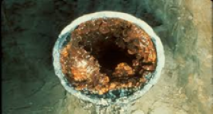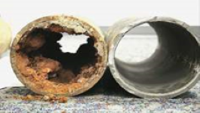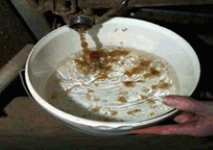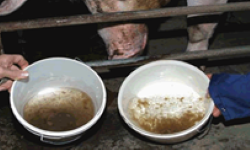Four ways to Improve Gut Health in Layers
- Healthy life
Dr. Sabiha Kadari, Technical Manager, Trouw Nutrition India
The gut is the central organ that plays a crucial role in the digestion and absorption of feed, immunity of the bird and governs the overall production efficiency of chicken. Given the shorter transit time of feed in the gut that averages around 2.0-3.0 hours in poultry, only a well-maintained gut will be able to deliver the nutrients fed via feed and reach the various systems of poultry for metabolic reactions. So, maintaining and ensuring an optimal gut health of chicken should be the prime role of any chicken producer. This is more so important in case of layer chicken, owing to the lower density of feed and the longer life cycle of birds.
The layer chicken, unlike a broiler one, is fed with a variety of raw materials so as to achieve the nutrient requirement of birds. These raw materials that are supposed to deliver the macro-nutrients (like energy, crude protein, crude fat etc.), tend to be more fibrous and of inconsistent quality – the inconsistency being in terms of nutrient profile, microbial contamination, adulteration etc. Also, the majority of feed being offered to layer birds (other than that of chick feed), is in the form of mash. Since the feed is not exposed to any heat treatment, it further aggravates the possibility of any microbial contamination that has not been taken care of. This – improper feed quality - is one of the aspect that can act as a trigger in hampering the gut health. The other source, which can affect the gut health is “water quality”. During summers there is high likelihood of the depth of water table to be decreased, reducing the quantity of available water and its quality. This also puts pressure on the poultry producer to procure water from outside - the quality of which is often questionable. Apart from this, any type of stress – be it heat, vaccination, disease, mycotoxins, transfer, high production or oxidative stress, also affects the gut health in a negative way, thus limiting the digestion and absorption of feed nutrients.
In this scenario, a holistic approach needs to be adapted, to maintain an optimal gut health. The various steps to be taken to ensure are as follows:
1. Raw material quality:
The raw material to be included in diet needs to be periodically tested in an authenticated internal/external laboratory for nutritional profile, mycotoxins and microbiological characteristics. The latter one, is more so important, in case animal protein like Meat & Bone meal, Fish meal or Poultry meal is included in diet. An appropriate mycotoxin management program should be in place, for rapid analysis of mycotoxins in field conditions. Presence of mycotoxins, or any probability of mycotoxin development in feed, needs to be taken care of through addition of good quality mycotoxin binders and mould inhibitors respectively. In the current situation of arrival of new/fresh crop in the market, which is likely to have high moisture percentage, addition of an adequate mould inhibitor is warranted, to check mould growth. The presence of pathogenic micro-organisms like E. coli and Salmonella Spp., should be practically zero in the raw materials.
Also, the raw materials procured, need to be stored in an appropriate manner, so as to avoid
re-contamination of them, with microbes and/or mycotoxins, and to prevent their oxidation (For those with high fat content as that of rice polish, full fat soya etc.)
2. Water quality:
The water is the most neglected nutrient, and should be given due emphasis, by carrying out regular checks in a laboratory for the required parameters like pH, hardness, TDS, ORP and microbiology. The dirty water affects health of poultry and affects the quantity and quality of water being offered through development of microbes, biofilms, slimes etc., as shown in Fig. 1.
It’s not only the pH of water that is crucial; this along with other parameters like hardness, microbiology etc., should be given due importance to be assured of a good water quality. Good quality water and gut acting organic acids need to be added in water to promote hygiene of water as well gut. The additives/concepts thus included, should be the ones that are capable of providing a stable water quality throughout the day.
Fig 1: Dirty water – Biofilms clogging the pipeline
 |
 |
 |
 |
3. Biosecurity measures:
Bacterial, viral or metabolic diseases, that have an effect on the poultry gut, need to be kept at bay by following adequate biosecurity measures. The measures include effective vaccination program, disinfection, acidification, sanitation practices, adequate breeder & hatchery management etc.
4. Inclusion of additives:
Additives that promote gut health play a vital role in maintaining the conditions that are optimal for eubiosis in the gut and to improve the digestive and absorptive efficacy of gut. There are various commercial preparations of these solutions available in the market that need to be carefully selected according to the phase of the bird and the use it is intended for. One of the important factor to be taken into account is the right combination of short and medium chain fatty acids, that when offered through feed and/or water, give promising results. Probiotics are proven beneficial in the initial stages of life of layer chicken, up to 4 weeks of age, post which their effect does not prove economically viable, since post that the bird can produce its own beneficial micro-organisms within the gut. Prebiotics, essential oils, butyrates etc., are various other alternatives, which when used judicially, might improve the gut health.
As the layer diets, are fiber rich ones, it is prudent to include a correct combination of Non-Starch Polysaccharide (NSP) enzymes to enable good gut health conditions and for maximum utilization of nutrients that would otherwise be not completely available. A good quality phytase also needs to be included in the diet, so as to have optimal gut health.
To conclude, in today’s system of layer rearing, wherein the bird is subjected to high productive stress, optimal nutritional, farm and health management practices need to be adopted, to extract the genetic potential to the maximum extent possible. While doing so, it should always be borne in mind, that the practices so adopted, are paying back value to the poultry producer, well enough to maintain his/her farming and/or to consider expansion for the future. The poultry producer should get in touch with experts in specific fields for meeting his various needs, so as to optimize the farm performance.
Trouw Nutrition is committed to assist poultry producers with their range of gut health programs and solutions that are to be included through feed and/or water, according to the need of the customer.
Please get in touch with your local Trouw Nutrition representative for more details.